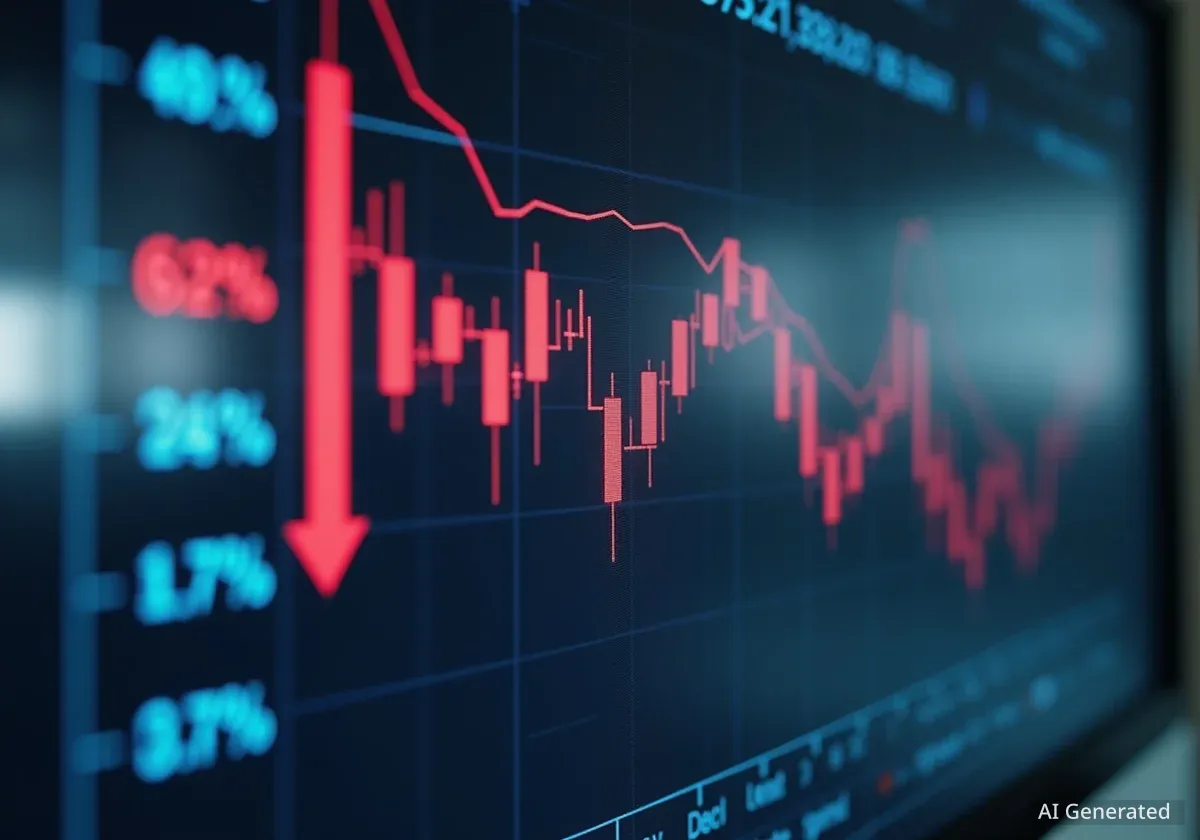The digital asset market is experiencing significant turbulence as major cryptocurrencies like Bitcoin face a seasonal downturn. Despite the price volatility, a wave of new financial products and corporate adoptions continues to push into the mainstream, creating a complex and contradictory landscape for investors and regulators.
Recent developments include a surge in applications for crypto-based exchange-traded funds (ETFs) for assets beyond Bitcoin and Ethereum, alongside companies making substantial cryptocurrency additions to their corporate treasuries. These moves highlight a growing integration between digital assets and traditional finance, even as the market itself shows signs of weakness.
Key Takeaways
- A wave of new crypto ETF applications for assets like Avalanche, Sui, and Bonk are now before the U.S. Securities and Exchange Commission.
- Corporate treasury strategies are evolving, with companies like Helius Medical Technologies adding significant Solana (SOL) holdings, leading to sharp stock price movements.
- Fintech innovation continues with firms like Plasma preparing to launch stablecoin-native neobanks offering high yields and cashback rewards.
- This institutional push is occurring as Bitcoin's price falls, risking another "Red September," a historically weak month for the leading cryptocurrency.
- The market is also reacting strongly to corporate news, as seen with Bakkt Holdings' stock price surging over 40% after a key board appointment.
ETF Filings Push Beyond Bitcoin and Ethereum
Investment firms are significantly expanding their ambitions for cryptocurrency exchange-traded funds, moving far beyond the established markets of Bitcoin and Ethereum. The U.S. Securities and Exchange Commission (SEC) recently received a cluster of five distinct filings for a range of digital assets and related strategies.
This new batch of applications signals a deeper push into the crypto ecosystem. Among the proposals are a spot Avalanche (AVAX) ETF from Bitwise and a fund focused on stablecoins and tokenization. Other firms are proposing more complex products, including ETFs built on Bitcoin and Ethereum basis trades.
The scope of these filings has drawn attention from market observers. Tuttle has proposed funds offering exposure to Bonk (BONK), Litecoin (LTC), and Sui (SUI). Meanwhile, T-Rex filed for a leveraged ETF tied to the Orbs network. One analyst described the breadth of these new applications as entering "wild" territory for regulated financial products.
The Significance of ETF Expansion
The approval of spot Bitcoin ETFs earlier this year was a landmark event, providing investors with regulated access to the asset. The industry is now attempting to replicate that success with a wider variety of cryptocurrencies, known as altcoins. Regulatory approval for these products would represent a major step in the maturation of the digital asset class, but it also presents new challenges for the SEC in assessing their risk and viability.
Corporate Treasuries and Stock Market Volatility
The intersection of cryptocurrency and traditional equity markets is creating notable volatility for publicly traded companies. Recent events show how corporate decisions related to digital assets can have an immediate and dramatic impact on stock prices.
Helius Medical Technologies Dives After Solana Purchase
Shares of Helius Medical Technologies, a neurotech company, fell 16% in a single day after it announced its first major acquisition of cryptocurrency for its corporate treasury. The company purchased 760,190 SOL, the native token of the Solana blockchain, at an average price of $231 per token.
The total value of the purchase was approximately $168 million. According to the announcement, Helius still holds around $335 million in cash reserves, which it indicated could be used for further additions to its Solana holdings. The negative stock market reaction highlights investor uncertainty regarding the strategy of holding volatile digital assets on a corporate balance sheet.
Bakkt Holdings Surges on Board Appointment
In contrast, digital asset services provider Bakkt Holdings (BKKT) saw its stock price spike more than 40% on Monday. The surge pushed its share price to $14.70, surpassing the consensus one-year price target from market analysts, which stood at $13.26.
The catalyst for the sharp increase was the announcement that noted crypto entrepreneur and investor Michal Alfred was joining the company's board of directors. Alfred was a co-founder of Digital Assets Data, a crypto-focused analytics platform. This strong positive reaction indicates that investors may view experienced crypto leadership as a significant asset for companies in the digital finance sector.
New Financial Products Emerge Amid Market Uncertainty
While established cryptocurrencies face headwinds, innovation in the decentralized finance (DeFi) space continues. New platforms are being developed to bridge the gap between digital assets and everyday consumer finance.
Plasma is one such company preparing to launch a "neobank" named Plasma One. The launch is planned to follow the mainnet deployment of its stablecoin-focused blockchain later this month. The platform aims to offer users a card that provides services directly tied to stablecoins.
According to the company, the Plasma One card will offer several compelling features:
- 4% cash back on spending.
- An annual percentage yield (APY) of over 10% on account balances.
- Global coverage for payments.
Users will be able to fund their accounts with stablecoins, starting with Tether (USDT), and make payments directly from that balance. This model represents a direct challenge to traditional banking by leveraging the efficiency of blockchain technology to offer higher returns to consumers.
Bitcoin Faces a Historically Weak Month
The backdrop for this wave of innovation and institutional interest is a cryptocurrency market showing signs of weakness. Bitcoin, the market's bellwether asset, is struggling through what is historically its most challenging month of the year.
After recently falling below $113,000, Bitcoin is now only 4% away from closing September with a loss. This trend, often referred to as "Red September," has been a consistent pattern in the cryptocurrency's history. The total cryptocurrency market capitalization has also declined, falling 3.8% to below $4 trillion.
"The contrast between the broader crypto market's performance and the continued development of new financial products is stark. While long-term adoption trends appear positive, short-term price action remains a significant concern for investors."
This downturn in digital assets is happening while traditional financial markets are performing strongly. Major stock indices are currently trading near their all-time highs, indicating a significant divergence in investor sentiment between the two asset classes. This separation suggests that macroeconomic factors may be affecting crypto differently or that the market is undergoing its own internal cyclical correction.





